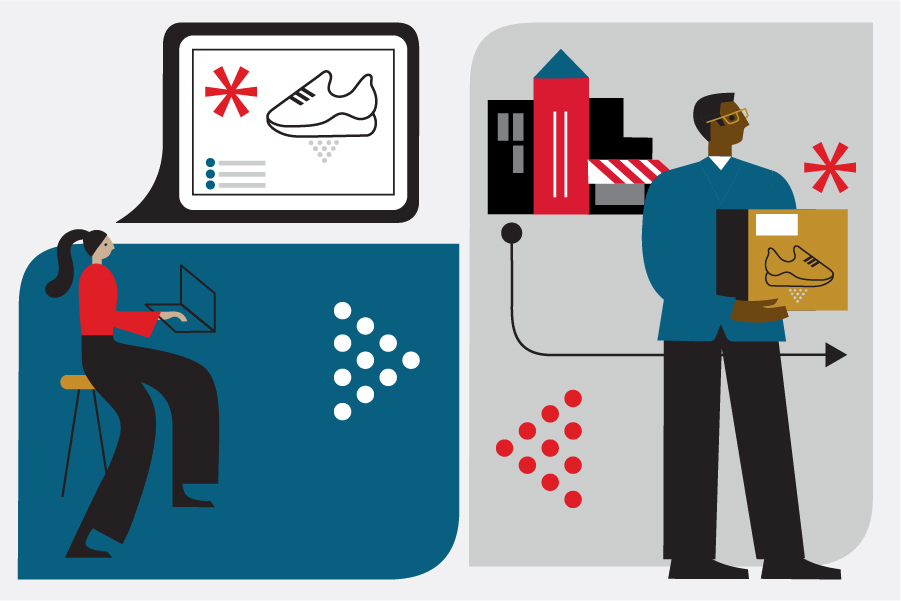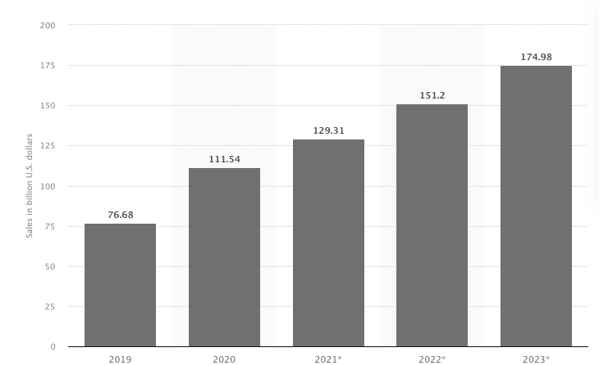Logistics
Industries
Technology & Innovations
E-commerce
E-commerce Fulfillment Services
Lease & Maintenance
Semi Trucks
Logistics
E-commerce
Lease & Maintenance
Buy Used Trucks

Direct-to-consumer fulfillment, ecommerce fulfillment… and direct-to-consumer ecommerce fulfillment? When there are so many words to describe the fulfillment process, it's not surprising there's confusion over what these workflows involve.
It's easy to assume that direct-to-consumer (D2C) fulfillment and ecommerce fulfillment are one and the same. While it's possible for brands to practice both of these strategies at the same time, the devil is always in the details.
So, what is the difference between direct-to-consumer fulfillment and ecommerce fulfillment? Why does this distinction even better, anyway?
We're going to answer these burning questions - and why it's so important when your business is looking to partner with a 3PL.
Big-box retailers like Target and Walmart continue to dominate the marketplace, thanks to their breadth of product offerings and hundreds of brands housed under one roof.
But there’s been a noticeable shift away from the ‘buy everything in one place’ model as ecommerce and mobile shopping make it easier than ever to connect with independent brands.

As it turns out, the majority of consumers would prefer to buy direct; 55% of consumers prefer to buy from brands instead of intermediaries, while 80% of consumers will make at least one purchase through a D2C brand within the next five years.
But rather than heralding a new era of retail, direct-to-consumer ecommerce is actually a return to a more traditional, artisan approach to selling. It’s a resurgence of independent merchants with more focused product selections - or even just a single product.
The successes of Casper, Allbirds, and Warby Parker are a clear sign that it isn’t bloated product catalogs that win customer loyalty; it’s a laser-focused value proposition.
Instead of trying to be everything to everyone, D2C brands have built massive followings because they have a deep understanding of their target customer and how they want to shop.
Thanks to the COVID-19 pandemic, consumers have been given even more reasons to buy direct. Snarled supply chains and ongoing problems with distribution have turned extensive store networks into a liability, rather than an asset.
As a result, we’ve seen everyone from Coca-Cola to Covergirl Cosmetic pivot to selling directly to consumers for the first time in an effort to minimize disruption. But transitioning to fulfilling online orders directly is a massive departure for distribution-based businesses - even if their product is already available through online channels.
This brings us back to our original question: What makes direct-to-consumer fulfillment distinct from ecommerce fulfillment? How do you which is right for you?
It's very common for D2C fulfillment and ecommerce fulfillment to be lumped together, thanks to the meteoric growth of online selling. But where ‘direct to consumer ecommerce fulfillment’ has rapidly emerged as the hottest retail trend, it’s important to define where and how these strategies differ from each other.
We’ve put together this little cheat sheet so you can see where direct to consumer fulfillment and ecommerce fulfillment diverge:
| Direct-to-consumer fulfillment | Ecommerce fulfillment | |
Selling channels |
Online and offline |
Online |
Intermediaries |
No |
Yes |
Access to customer data |
Yes |
Sometimes |
The need to outsource |
Yes |
Yes |
Confused? Let’s dive in.
Ecommerce fulfillment is fairly straightforward in that it requires retailers to operate an online sales channel. But this isn’t always the case for direct-to-consumer fulfillment.
That cute little boutique down the street? If it sells directly to the consumer and manages its own network of suppliers, it’s still a D2C retailer.
In fact, we’ve seen a big rise in digitally-native D2Cs choosing to open their own stores once they’ve maxed out their growth online. Once known for fuelling online sales with its virtual try-on app that avoided the need for store visits, Warby Parker now operates over 91 stores nationwide.
While ecommerce fulfillment must involve some form of online selling, it doesn’t necessarily have to be direct. Choosing to dropship or sell via a marketplace like Amazon or Etsy, for example, would be a form of ecommerce fulfillment - but this wouldn’t be considered direct-to-consumer selling.
Perhaps the biggest difference between ecommerce fulfillment and direct-to-consumer fulfillment is the role that intermediaries play in the fulfillment process.
The reason it’s referred to as direct selling is that there are no third parties - including stockists, distributors, or wholesalers - present in the supply chain. It’s up to the individual business to coordinate everything from sourcing inventory to selling and ensuring that all orders make their way smoothly to the end consumer.
There are obvious pros and cons to this strategy. D2C fulfillment might give brands a bigger slice of the pie, but it’s a lot of responsibility to take on - especially if your order volumes start growing rapidly.
This is why many emerging ecommerce brands chose to take advantage of services like Fulfilled By Amazon (FBA) or drop shipping instead of selling directly; both are quick to set up and allow businesses to leapfrog many of the logistical difficulties that come with in-house fulfillment. However, this does come at a cost from the standpoint of brand-building and losing control over crucial touchpoints in the customer experience.
At first glance, customer data might not appear to have anything to do with fulfillment. However, it plays an important role in transforming the fulfillment process into a competitive edge that enhances the post-purchase experience.
Shoppers typically discover D2C merchants through social media or other digital marketing channels. Engagement rates and CTR tells brands what content is resonating with viewers and driving store visits. Tracking cookies can tell sellers what pages a consumer is viewing on the website, helping brands to push relevant and informative content and that gets conversions over the line.
By comparison, third-party ecommerce marketplaces can be something of a black box. Because you don’t control these channels directly, it’s impossible to know what journey consumers took to buy your product - or why some chose not to.
Moreover, if your customer churn rate is high, it could be because something in the post-purchase experience is adding friction. But without access to this data, it’s hard to know what steps you need to take to refine your fulfillment process.
But there is one area that both direct-to-consumer fulfillment and ecommerce fulfillment have in common: Brands will ultimately find themselves in a position where they’ll need to consider outsourcing fulfillment to meet customer expectations for seamless, hassle-free brand experiences.
Why? Because businesses that practice self-fulfillment are faced with tough decisions as their order volumes grow. In order to keep up with demand, they have two options:
However, expanding an in-house fulfillment operation isn’t cost-effective for most brands. The cost required to take on extra warehousing space and onboard staff onto Warehouse Management Systems is unlikely to pay off; a lack of flexibility means that these investments go underutilized during times of lower sales activity.
By partnering with an experienced fulfillment provider, brands can get the best of both worlds; superior infrastructure and expertise paired with true scalability to handle peaks and troughs in demand.
No matter whether you’re an ecommerce brand selling via Amazon or a direct-to-consumer merchant with online and offline selling channels, finding a scalable fulfillment partner is the key to building a productive, long-term partnership.
You don’t want to find yourself needing to switch 3PL partners after only a few months because they can’t meet your needs; this is going to stifle growth and add friction to your fulfillment process. By choosing a fulfillment provider who can scale effectively alongside your business, you can set yourself up for sustainable, long-term growth and consistent customer experiences that build brand loyalty.
With 18 fulfillment locations and state-of-the-art automation technology to assist your business in scaling effectively, Ryder is the ideal partner for all of your ecommerce and direct-to-consumer fulfillment needs. Contact us today to find out how we can assist your business in managing your growth.